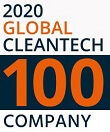
As governments around the globe prioritize low-carbon concrete in new building projects, finding suitable replacements for cement in the concrete mix is at the forefront of new developments in infrastructure technology. Although cement makes up only about 10% of concrete’s mix design by weight, its production is responsible for 90% of the emissions associated with concrete manufacturing. The growing demand for low-carbon concrete, coupled with the need to fulfill an increased demand for new infrastructure amid global rebuilding after the COVID-19 pandemic, has made reduced-cement concrete a particularly desirable option.
According to a global commodity report released by the Ireland-based global construction consulting firm Linesight, US cement prices per ton increased 9.4% per ton from Q1 2022 to Q1 2023, with concrete prices rising 8.9% in the same period—both cement and concrete exhibited a 1.6% price increase from Q3-Q4 2022 alone. Moreso than the need to combat rising emissions levels due to the production of cement, many concrete manufacturers are looking into cement alternatives just to keep projects financially feasible as they continue to build.
CarbiCrete’s technology replaces cement in the concrete mix with steel slag, an industrial by-product of the steelmaking process. Per the Linesight report, steel prices remained relatively low in 2022; sector demand is predicted to stabilize in 2023, due to infrastructure projects “supported by federal and local government investments in upgrading the country’s transport infrastructure.” Steel is mainly produced via either a fossil fuel-burning basic oxygen furnace (BOF) or an electric arc furnace (EAF); the latter is used to recycle scrap metal into new, usable product. Steel Slag is produced as a by-product of both these processes. In the UK, Tata Steelworks is looking to replace blast furnace iron plants with electric arc furnaces, making them less emissive, more green, and adaptable to the future sustainable economy.
Forecasted levels of steel slag produced as a by-product of electric arc furnace steel manufacturing in Canada are expected to rise in 2023, too. According to the NRCAN, Canadian steel manufacturing giant Dofasco is expected to produce an additional 2.4 million tonnes of “hot metal” in a new EAF in 2023, a 160% increase from 2022. This means a total of 507 thousand tonnes of EAF steel slag will be produced by Dofasco alone in 2023. Another big player in Canadian steel, Algoma Steel, will produce 3.3 million tonnes of EAF product in the coming year, bringing 429 thousand tonnes more of new EAF slag into the market.
With EAF slag trending upward, CarbiCrete has more than enough material available to scale up production and contribute to the circular economy. The CarbiCrete process goes beyond creating cement-free concrete by actually sequestering CO2 within concrete blocks. In order to cure the slag-based concrete, it is placed in a CO2 curing chamber. Through a process called carbon mineralization, components in the steel slag are converted into calcium carbonate, hardening the concrete—often to greater compressive strengths than conventional concrete.
The CarbiCrete process can be adapted to any active precast plant, with a simple plant retrofit overseen by CarbiCrete. In addition to avoiding the emissions associated with cement, this carbon mineralization allows for CO2 to be permanently abated from the atmosphere. As steel production steadily continues, CarbiCrete’s steel slag concrete presents a sustainable and financially favourable option.



